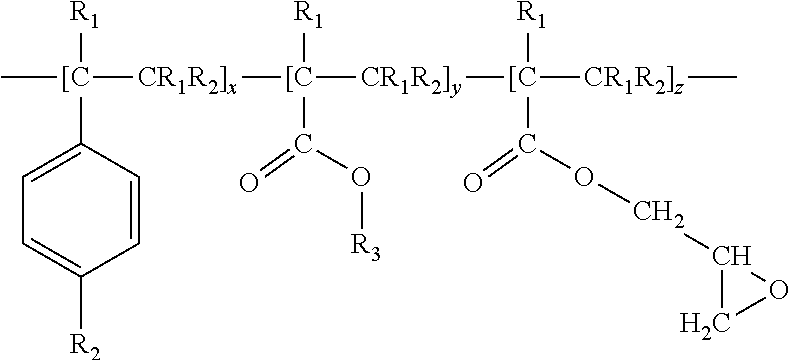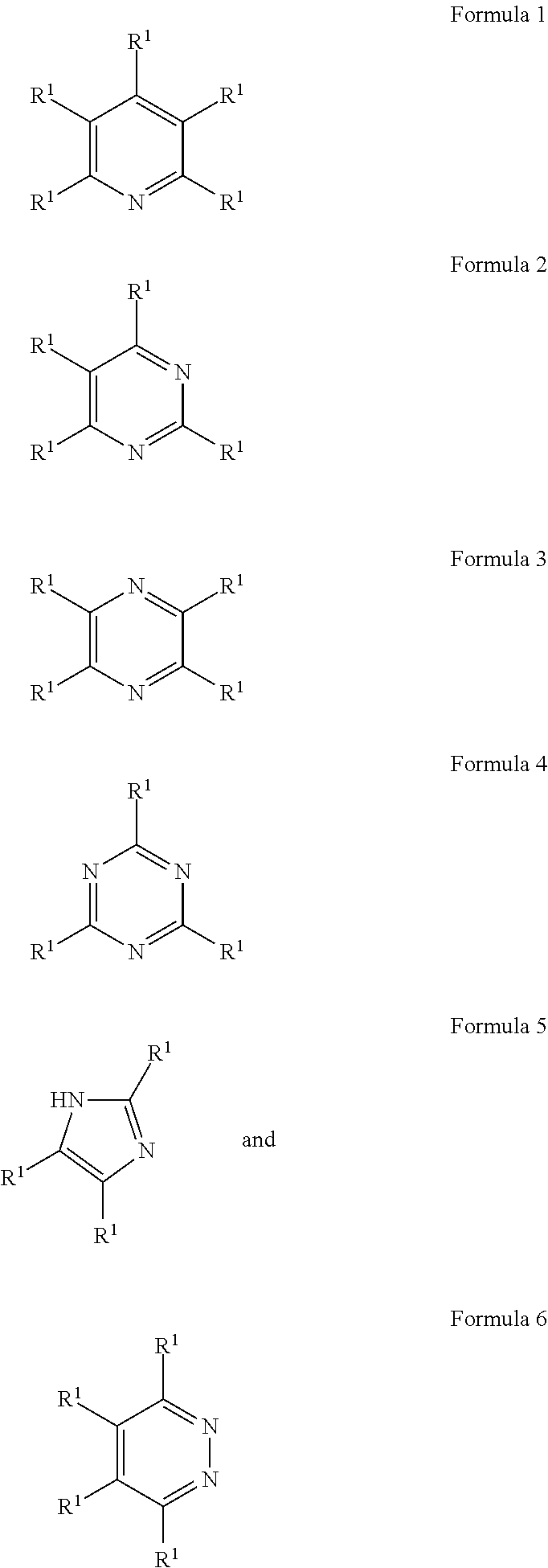Biobased Rubber Modified BioDegradable Polymer Blends
a biodegradable polymer and rubber technology, applied in the direction of plant products, tyre parts, synthetic resin layered products, etc., can solve the problems of prohibitive levels of additional costs, limited industrial scale copolymerization of 4-hydroxybutyrate and 5-hydroxyvalerate, and inability to achieve economic effects, etc., to achieve the effect of improving material properties
- Summary
- Abstract
- Description
- Claims
- Application Information
AI Technical Summary
Benefits of technology
Problems solved by technology
Method used
Image
Examples
example 1
Effect of PHA MW, %4HB and Reactive Extrusion on Properties of PLA / PHA Blends
[0175]In this example, the mechanical and rheological properties of several PLA / PHA film blends were compared as a function of PHA molecular weight and addition of peroxide branching agent. The PLA materials used in the blends were Ingeo® 2003D and 4032D resins (NatureWorks LLC). The 2003D is an optically clear, general purpose, extrusion grade resin mainly for use in food packaging film applications while the 4032D is an opaque resin having a lower molecular weight which is used primarily for laminating film applications. A summary of the PHA blend formulations and properties are shown in Table 2. Also included in the table are results for a PHA / PLA blend having the toughening additive LOTADER® 8900 as a component (Formulation 6). The blend formulations were prepared by first compounding the raw resin and additives together using a 16 mm PRISM (Thermo Electron) co-rotating twin-screw extruder with the foll...
example 2
Preparation of Reactively Extruded PLA / PHA Blends Using 100% Biobased High and Low Molecular Weight P3HB-4HB Rubber Copolymer
[0178]In this example, several PLA / PHA blends are compared one of which had a high molecular weight (Mw=1.1×106 g / mole), high 4HB content (40%), 100% biobased P3HB-4HB “rubber” copolymer. The formulations and their mechanical and melt properties are shown in Table 4. All of the formulations were prepared as outlined in Example 1 with the addition of a peroxide branching agent.
TABLE 3Summary of PLA / PHA reacted blend data. PHA C is a 100% biobasedP3HB-4HB “rubber” copolymer having % 4HB content of 40% anda Mw = 1.1 × 106 g / mole.Formulation1234PLA INGEO ® 4043D59695959PHA A30000PHA C020300PHA D000301.5% TRIGONOX ® 1315555in CITROLFEX A4ACRAWAX ® CV0.50.50.50.5FILMLINK ® 5005.55.55.55.5Total (wt %)100100100100Mechanical and MeltPropertiesG′ @ 0.25 rad / s (Pa)6708921627872η* @ 0.25 rad / s (Pa · s)7982139001668011630η* @ 100 rad / s (Pa · s)1359211519261703Melt Elastic...
PUM
| Property | Measurement | Unit |
|---|---|---|
| Temperature | aaaaa | aaaaa |
| Temperature | aaaaa | aaaaa |
| Fraction | aaaaa | aaaaa |
Abstract
Description
Claims
Application Information
 Login to View More
Login to View More - R&D
- Intellectual Property
- Life Sciences
- Materials
- Tech Scout
- Unparalleled Data Quality
- Higher Quality Content
- 60% Fewer Hallucinations
Browse by: Latest US Patents, China's latest patents, Technical Efficacy Thesaurus, Application Domain, Technology Topic, Popular Technical Reports.
© 2025 PatSnap. All rights reserved.Legal|Privacy policy|Modern Slavery Act Transparency Statement|Sitemap|About US| Contact US: help@patsnap.com


